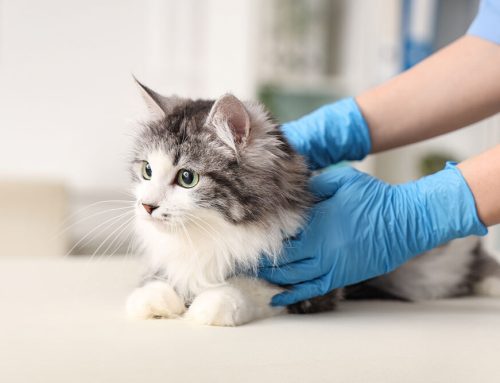Lyme disease is a complex illness transmitted via an infected black-legged (i.e., deer) tick’s bite. This illness can affect people and their dogs. While cats can technically contract Lyme disease, no cases have been reported outside of laboratory settings. Learn how to protect your pet—and your family—from Lyme disease by following our Homestead Animal Hospital team’s five prevention tips.
#1: Administer year-round tick prevention to your pet
Nothing is more effective for your four-legged friend’s protection against Lyme disease than year-round tick prevention. You can administer a product that is a combination heartworm, flea, tick, and intestinal parasite preventive, or a separate flea and tick product, depending on your pet’s needs. Preventives are available in topical applications, oral medications, and long-lasting collars to ensure you can easily and effectively protect your pet from ticks.
#2: Vaccinate your dog for Lyme disease
Because of black-legged ticks’ prevalence, the East Coast is a Lyme disease hotbed, which means you should use every tool at your disposal to protect your furry friend from disease. Vaccinating your pet annually for Lyme disease can virtually eliminate their infection risk, and, if your pet does become infected, vaccination reduces the illness’ severity. Since Lyme disease is prevalent in our area, we consider the Lyme vaccine to be a core vaccination. Talk to our team about whether your dog is due for their next Lyme disease vaccination.
#3: Avoid walking your dog in a prime tick habitat
Ticks are particular about where they set up shop in the search for their next meal. They enjoy wooded areas, tall brush, and locations near water, rarely hanging out in direct sunlight. So, the next time you choose a path for your pet’s daily walk, opt for a route with short grass and few trees. If you do walk through a heavily wooded area, check your pet thoroughly for ticks when you return home.
#4: Manicure your lawn to help protect your pet
Regular lawn care makes your yard look good, in addition to helping protect your pet from parasitic infections. Mow your lawn frequently, trim bushes and shrubs, and remove leafy debris and other clutter.
Ticks can have multiple hosts in their lifetime, and to minimize Lyme disease transmission, you need to make your yard inhospitable to these pests’ hosts. To deter small rodents and wild mammals from hanging around your yard, always pick up trash and lock debris securely in bins. Never leave out pet food overnight, and eliminate standing water by dumping buckets, cleaning gutters, and draining flower pots. Block off potential rodent and wild mammal nesting areas under sheds and in garages by repairing holes and ensuring doors shut securely.
#5: Check your pet for ticks

Checking your pet for ticks immediately after being outdoors is an excellent way to prevent Lyme disease transmission. Black-legged ticks must remain attached to a host for about 48 hours to transmit disease, so removing ticks from your pet’s fur—before they have been attached for a few days—helps eliminate your four-legged friend’s disease contraction risk. While ticks can pick any spot on your dog’s body to settle in for a meal, they particularly like:
- In and around the ears
- Around the eyelids
- Under the collar
- Under the front legs
- Between the back legs
- Between the toes
- Around the tail
Check these areas of your pet’s body, and if you discover an embedded tick, remove the pest carefully. Using tweezers, grasp the tick’s head as close to your pet’s skin as you can without pinching them, then pull steadily back to remove the tick. Avoid twisting the tick during removal or crushing the pest’s body, as this can leave the head embedded or trigger an early release of pathogens.
Lyme disease signs in pets
Occasionally, a tick can slip past the best defenses and infect your furry pal with Lyme disease. Although the Lyme bacterium can be transmitted from tick to pet within 48 hours, signs and antibodies may not appear for two to five months—or much later—after the bite. And, although your pet may be infected with the Lyme bacterium, only 5% to 10% of infected pets show signs, which makes diagnosing and treating the disease virtually impossible without annual screening tests. If you discover a tick attached to your pet, monitor them for Lyme disease signs, which can include:
- Lameness that can shift from leg to leg
- Swollen lymph nodes
- Swollen, painful joints
- Fatigue
- Appetite loss
- Fever
Lyme disease can be challenging to treat, as signs recur despite initial antimicrobial therapy. The Lyme bacterium tends to harbor in the kidneys, and if your dog develops a severe infection, they can develop kidney disease, exhibiting excessive thirst and urination, and vomiting. As Lyme disease can have lifelong effects, prevention is critical for safeguarding your pet against illness.
If you suspect your pet has Lyme disease or you would like to schedule your four-legged friend’s Lyme disease vaccination, schedule an appointment with our Homestead Animal Hospital team.
















Leave A Comment